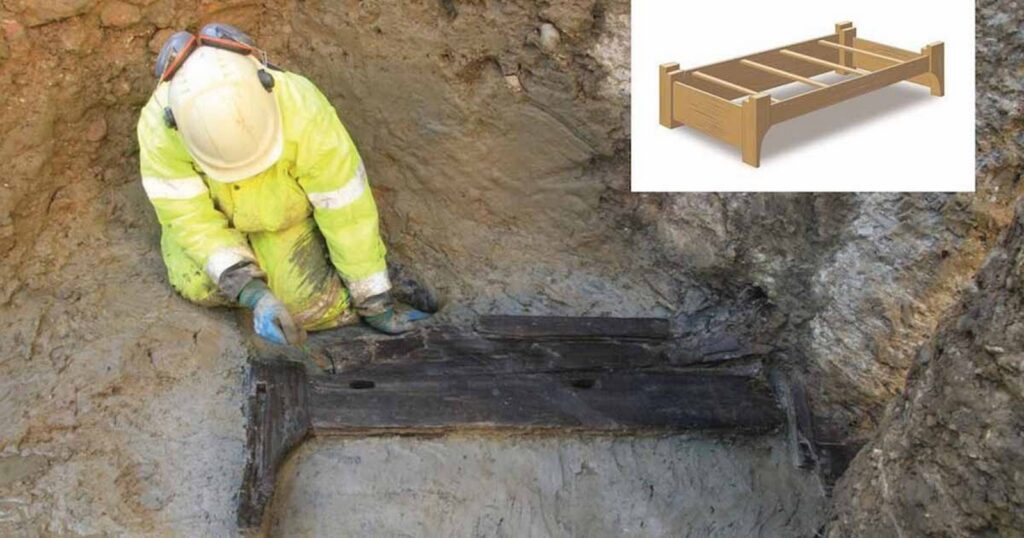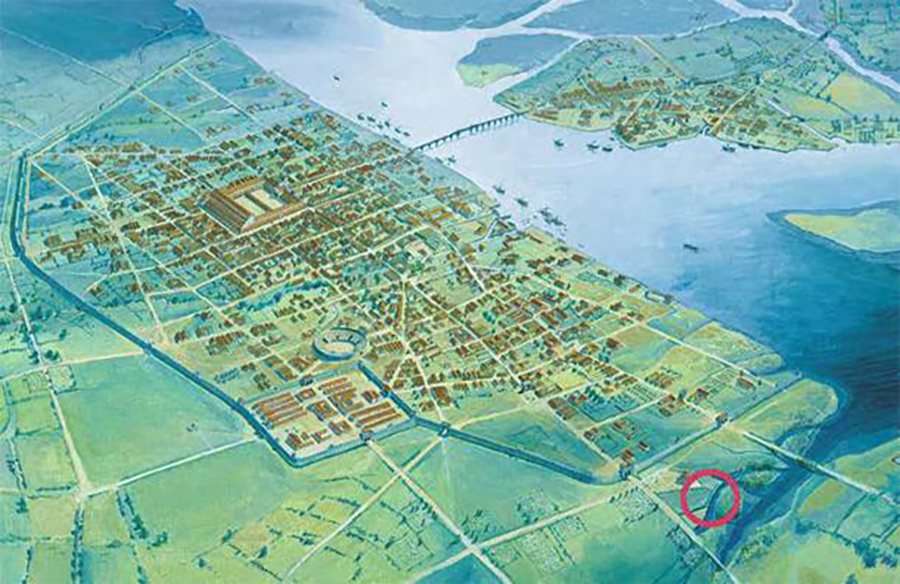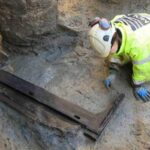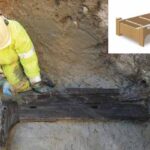In a surprising archaeological find, researchers in London have uncovered a remarkably well-preserved Roman funerary bed, shedding light on ancient burial practices in Britain. The discovery, made near Holborn viaduct in central London, represents a significant addition to our understanding of Roman funerary customs in the region.

A National First: The Roman Funerary Bed
The Roman funerary bed, meticulously crafted from high-quality oak, was discovered in a former Roman cemetery near Holborn viaduct. Found alongside five oak coffins, the bed burial marks a rare find, with only three other Roman timber coffins ever unearthed in London. The bed features intricately carved feet and was constructed using small wooden pegs to secure the joints, showcasing exceptional craftsmanship.
The Surprise Discovery
Archaeologists were taken aback by the unexpected discovery of the Roman funerary bed, which was found buried alongside other artifacts dating back to the earliest period of Roman occupation in Britain, between 43 AD and 80 AD. The burial site, located outside the walls of the Roman city and approximately 6 meters beneath the modern ground level, had been excavated in the past. However, the intact nature of the Roman bed burial came as a complete surprise to researchers, highlighting its significance in the archaeological record.

Symbolism and Significance
The discovery of the Roman funerary bed provides valuable insights into Roman burial practices and symbolism. The bed, adorned with a carefully carved defeated Roman gladiator, holds symbolic significance within a funerary context, representing the struggle against death. This finding offers tangible evidence of the use of funerary beds in Roman funeral processions, a practice previously known only through written accounts and carvings on tombstones.
Evidence of High Status
The craftsmanship and quality of the Roman funerary bed suggest that it was likely the burial of a high-status individual. The absence of grave goods accompanying the bed further emphasizes its significance, indicating that it was reserved for an elite member of Roman society. The discovery underscores the importance of London within the Roman Empire and provides insights into the social hierarchy of Roman Britain.

Legacy of Roman Influence
The discovery of the Roman funerary bed adds to the rich tapestry of Roman heritage in Britain. London, known as Londinium during Roman times, served as a vital hub within the Roman Empire, with its road network forming a crucial link between Roman outposts across Britain. The find highlights London’s role as the largest Roman city in Britannia until 410 AD, offering a glimpse into the lives of the elite members of Roman society who called it home.






















